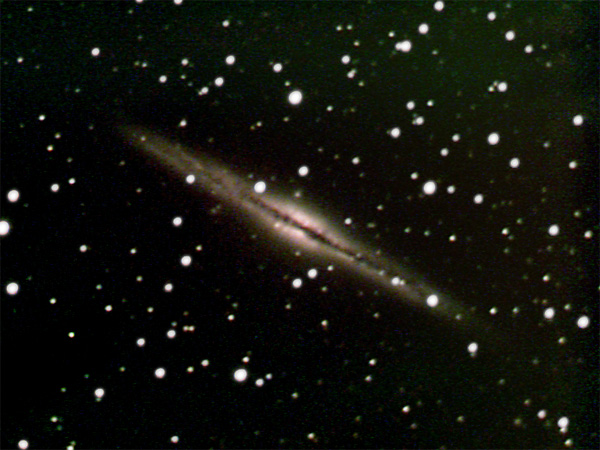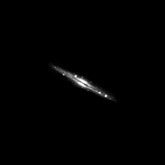The Milky Way might look like this if viewed edge-on by someone 30 million light-years away.
The central bulge is the core of the galaxy, where (very likely) a massive black hole is gorging itself on star systems and belching out X-rays and gamma-rays. The dark band across the middle is a dust lane along one of the galaxy's arms. If this were our galaxy, the solar system would be two-thirds of the way from the central bulge to the edge of the galaxy.
We are incapable of really understanding what we are seeing. NGC 891 (like our own galaxy) is more than 100,000 light-years across. The Voyager 1 space probe, the fastest space probe ever launched, has after 30 years travelled one thousandth of a light-year. There are more than 400 billion stars in NGC 891. Every person on Earth could own ten complete star systems in NGC 891 and there would still be hundreds of billions of star systems left as nature preserves. The photons from this galaxy, which struck my camera's CCD on 10 January 2005, began their journey almost thirty million years ago. If it could fly in space, the Concorde at top speed would take 12 trillion years to reach NGC 891, longer than the universe is expected to last.

